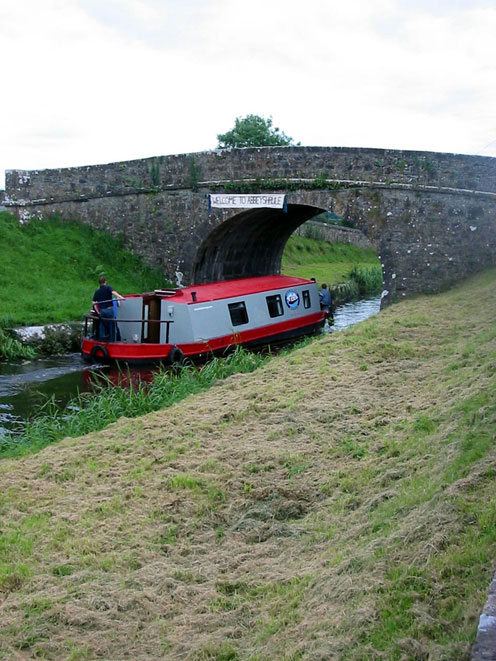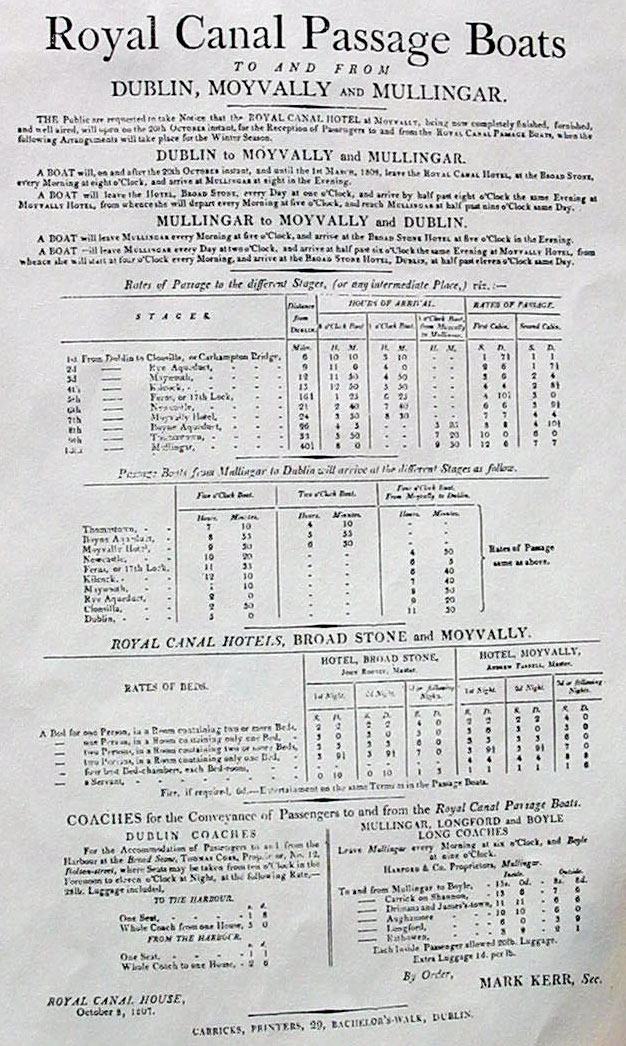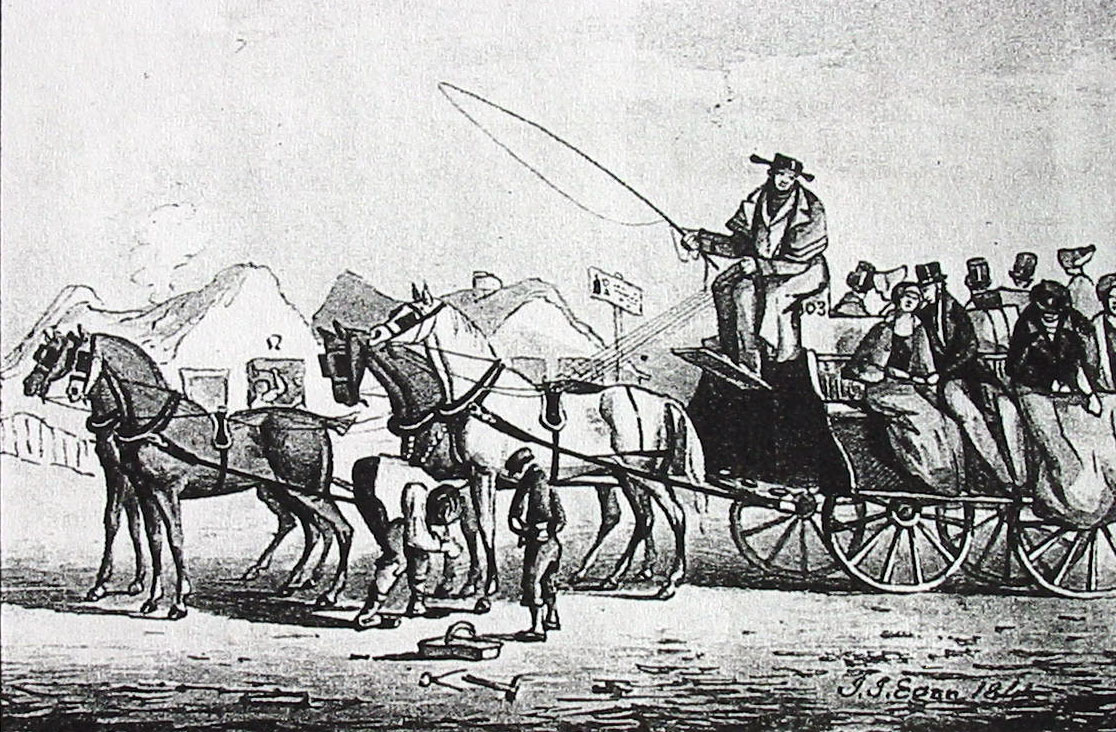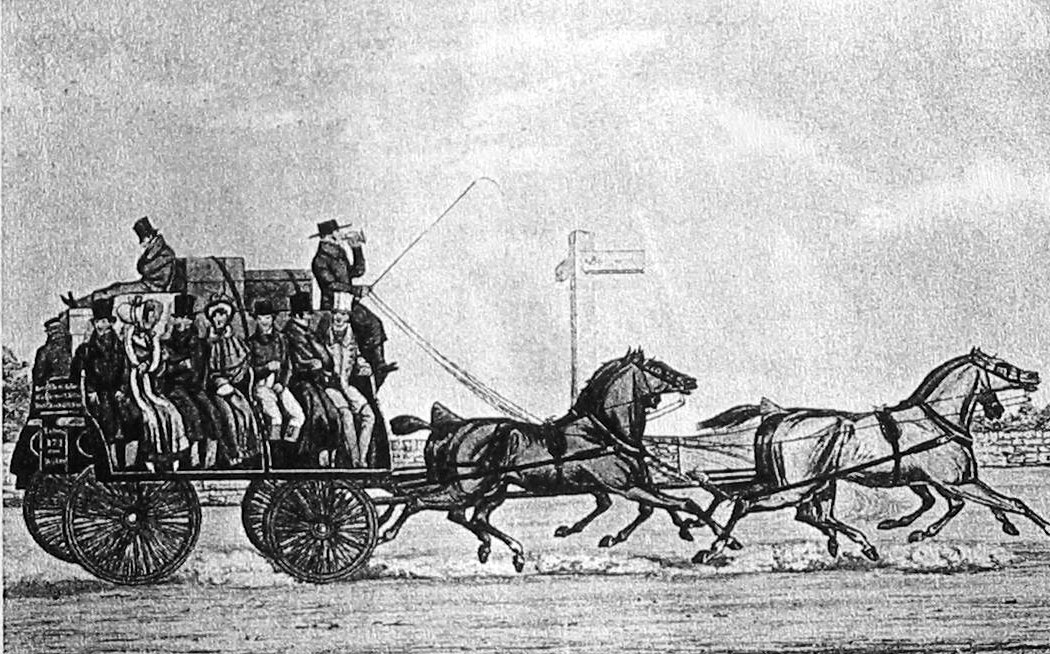The
Irish Road to South America
Nineteenth-Century
Travel Patterns from Ireland to the River Plate
|
Page
2 |
|
Writers
at the turn of the century had a particular fascination with
some enclaves of the Royal Canal. ‘The Irish/Argentine William
Bulfin, the intrepid traveller and editor of The Southern
Cross approached Abbeyshrule [Co. Longford] by the line
from Tenelick. He stopped to chat to a denizen of the locality
and realised to his astonishment that he was in the famous
Mill Lane of which he had heard many a time and oft far away
on The Pampas in corral or chiquero when the sun-tanned
exiles of Longford and Westmeath recalled some story of Abbeyshrule
and its Mill Lane’ [McGoey 1996].
Baggage
used by the emigrants would have been trunks and boxes for
well-off travellers and simple bags for the poor emigrants.
Kate Connolly in You'll Never Go Back mentions that
her party’s baggage was a couple of trunks, and that Dick
Delaney, the sign painter, 'painted our names on both. I remember
how just the two boxes looked, standing on the kitchen floor
before the dresser, with "The Misses Connolly – Buenos
Ayres" on one, and "Miss Dwyer – Buenos Ayres"
on the other. [...] Nancy had said she wanted to see her name
on a trunk, no matter whose trunk it was, so we agreed, and
she was wild with delight at the sight of it' [Nevin 1946:
12]. |
|

The Royal Canal.
Scally's Bridge in Abbeyshrule, Co. Longford (2002)0 |
|
|

Timetable
from 1807 (Clarke 1992) |
|
In
October 1848, heralding the decline of the importance of the
Royal Canal, the Midland Great Western Railway Company (MGWR)
reached Mullingar and in August, 1851, the line extended to
Athlone. The railway age ‘signalled the demise of the canal.
In 1845 the railway company purchased the entire canal for
£298,059, principally to use the property to lay a new railway.
It was legally obliged to continue the canal business, but
inevitably traffic fell into decline. Passenger business ceased
totally within a few years and by the 1880s the annual goods
tally was down to 30,000 tons’ [O.P.W. Waterways 1996: 19].
By
November 1855, the railway reached Longford. From 1848 onwards,
the railway replaced the canal as the main mean of transport
to Dublin. In the 1850s, emigrants travelling on the MGWR
line had a choice of four trains daily to Dublin. The number
of trains to the capital increased in the 1860s with the extension
of the line to Galway and Sligo. Journey time to Dublin was
around two hours. Those who travelled by third or fourth class
would have had an uncomfortable journey: the 1850s fourth
class carriages had neither heat nor sanitation, and were
little better than cattle trucks, sometimes without seating.
In
the Midland Great Western Railway line, the stations between
Mullingar and Dublin were Killugan, Hill of Down, Moyvalley,
Enfield, Ferns Lock, Kilcock, Maynooth, Leixlip, Luran, Clonsilla
and Blanchardstown, with a total distance of 83 kilometres.
A timetable sheet of December, 1853, includes six daily trains
(arriving at Dublin 5.15 A.M., 9.45 A.M., 11.30 A.M, 2.00
P.M., 9.00 P.M., and 10 P.M.) and two Sunday trains (arriving
at Dublin 5.15 A.M. and 10.00 P.M.). Fares were 8s (first
class), 6s-6d (second), 4s-9d (third), and 3s (fourth). Most
of the emigrants ‘would have purchased third of fourth class
tickets to Dublin’ [Illingworth 2001]. |

(Ulster Folk and Transport Museum) |
|
| Those
emigrants who lived at a distance from the railway would
take a coach to reach the rail station. The village of
Ballymore, which was the epicentre for the Midlands emigration
to South America, is about twenty kilometres west of Mullingar
on the now road to Athlone. The nearest railway stations
‘were Athlone and Mullingar, and stage coaches passed
through Ballymore on the way to Mullingar and Dublin’
[Illingworth 2002]. By the late 1840s, Bianconi
coaches, [5] each capable of carrying up to twenty passengers,
provided the means by which emigrants could reach Longford,
Mullingar and Athlone from the countryside, and from the
small rural villages and townlands of Westmeath and Longford.
Smaller stage coaches travelling directly from Athlone
and Mullingar to Dublin were also used by emigrants up
until the 1850s. Horse-drawn |
|

Mullingar Railway Station (2002) |
|
stagecoaches moved at about twelve kilometres per hour, with
frequent stops to rest both horses and passengers, ‘who sometimes
needed it more after long bumpy rides over rough roads’ [O’Cleirigh
2002]. A traveller who went by coach from Strabane to Enniskillen
in 1834 tells that:
|
At first it drove on at a rapid
rate, carrying about twenty-eight passengers, ten inside
and eighteen on the outside, noisy and inebriated fellows…
My feet had got numb with cold… When we had arrived
within two yards of Seein Bridge, between Strabane and
Newtownstewart, the lofty vehicle was thrown into the
ditch, within two yards of a dangerous and steep bridge.
If the vehicle had advanced about three yards further
we would have been dashed to death [O’Cleirigh 2002].
|
|

(Ulster Folk and Transport Museum)
|
The
Bianconi’s ‘Car and Coach Lists’ of 1842 includes the timetable
of the stagecoaches connected with the Royal Canal boats to
Dublin, and intermediate stages. From Ballymahon, the coach
departed 4.08 A.M. arriving at Mullingar at 6.11 A.M. |

(Ulster Folk and Transport Museum) |
|
In
the 1850s, William Mulvihill of Ballymahon, Co. Longford,
was the agent for the River Plate Steamship Company in
the Midlands. [6] Prospective emigrants would buy their
tickets from Mulvihill’s grocery store. From Mullingar,
the emigrants could book a direct rail plus boat ticket
to Liverpool for £2-2s. ‘The fact that emigrants [to South
America] were advised to bring a revolver as well as a
saddle may not have deterred farmers who had been forced
to protect their stocks from starving labourers’ [O’Brien
1999: 55]. This would indicate that some of the emigrants
bound to Argentina – who were able to pay a high fare
to South America – were also able to ride a horse, a skill
that would be very useful for them in the Argentine pampas.
|
| |
|
[5]
Named after Charles Bianconi (the king
of the Irish roads), who started the first Irish mail
coach service in 1815, beginning from the Hearn’s hotel in
Clonmel, Co. Tipperary, to Thurles and Limerick. By 1825,
Bianconi had 585 route miles and two decades later he had
trebled. In 1836, long cars with twenty passengers capacity
were added to the service. He had rivals but, where they often
competed with the canal boats, Bianconi tended to run connecting
feeder services, a move which enabled him to outstay many
other operators.
[6]
Under ‘Mulvihill,
William’ there are two entries in Leahy 1996: 166 (County
Longford Survivors of the Great Famine: a Complete Index to
Griffith’s Primary Valuation of Co. Longford 1854), and
one in Leahy 1990: 151 (County Longford and its People:
an Index to the 1901 Census for County Longford). |
|
|
|
|
|


